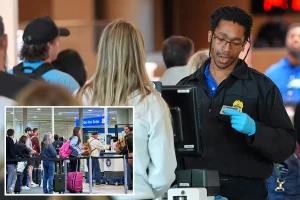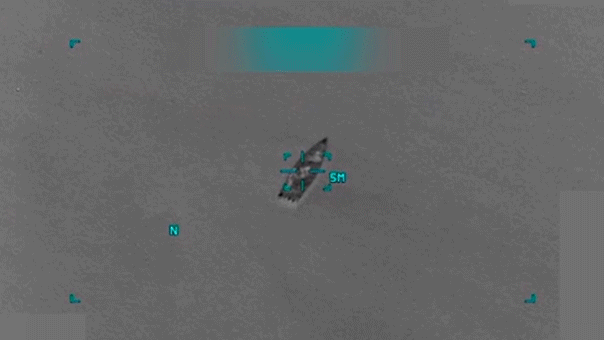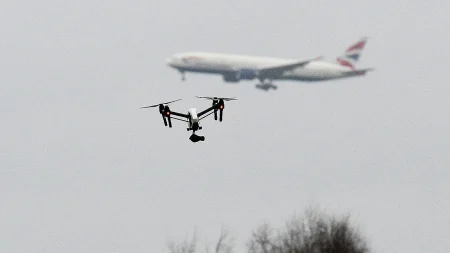U.S. Military Drone Strike on Drug Vessel Leaves Survivors in Caribbean Waters
In a significant development in the ongoing war against drug trafficking, a U.S. military drone strike targeted a large drug smuggling vessel in international Caribbean waters on Thursday. What distinguishes this operation from previous similar strikes is that, for the first time in this campaign, there were survivors—reportedly two to three individuals who remained alive after the attack. The U.S. military promptly deployed search and rescue assets, including a helicopter, though information about whether these survivors were successfully rescued or the extent of their injuries remains unclear at this time. This incident represents a critical moment in what has been described as a “quiet but intensifying” military campaign against maritime drug trafficking operations.
This latest strike is reportedly the sixth known incident in what appears to be an escalating military strategy targeting suspected drug boats. The campaign, which began just last month, reflects President Trump’s broader and more aggressive approach to combating transnational drug cartels. The administration has increasingly favored direct military action against drug trafficking infrastructure, representing a significant shift in tactics from previous approaches that relied more heavily on law enforcement cooperation and interdiction. The Caribbean operation seems to be part of this evolving strategy that employs lethal force against suspected drug transportation networks, raising important questions about the rules of engagement and the potential for civilian casualties in such operations.
The use of armed drones against maritime targets represents a noteworthy tactical development in the fight against drug trafficking. Traditionally, counternarcotic operations have involved coast guard vessels, naval assets, or aircraft surveillance followed by boarding operations. The shift to direct strikes using unmanned aerial vehicles indicates a more aggressive posture that treats these smuggling vessels as legitimate military targets rather than law enforcement challenges. This approach allows for operations in remote areas where traditional interdiction might be difficult, but also presents new challenges related to positive identification of targets and assessment of potential collateral damage. The fact that this particular vessel was described as “big” and operating in international waters adds context to the operational decision-making behind the strike.
What makes this incident particularly significant is the presence of survivors. Previous drone strikes in this campaign apparently resulted in no known survivors, raising questions about the lethal nature of these operations and their compliance with international laws governing use of force outside of declared combat zones. The fact that some crew members survived this particular strike may provide intelligence opportunities for U.S. authorities seeking to understand the broader networks supporting these smuggling operations. At the same time, it presents humanitarian and legal obligations for the U.S. military to render aid to survivors in international waters, regardless of their alleged criminal activities. The deployment of search and rescue assets demonstrates acknowledgment of these responsibilities, though the outcome of these rescue efforts remains unknown.
This emerging campaign against drug vessels appears to be an extension of President Trump’s declared “war on cartels,” which has sought to apply more direct military pressure on drug trafficking organizations. The administration has framed these transnational criminal groups as a national security threat rather than merely a law enforcement challenge, justifying the use of military assets and lethal force. This perspective represents a continuation of the militarization of anti-drug efforts that began decades ago but has found new expression in these direct strike operations. Experts observing these developments note that this approach signals a new phase in U.S. counter-narcotics strategy, one that treats drug trafficking networks more explicitly as enemy combatants rather than criminal enterprises to be dismantled through arrests and prosecutions.
The implications of this evolving military campaign extend beyond immediate tactical concerns. As the U.S. expands the use of lethal force against drug smuggling infrastructure, questions arise about the strategic effectiveness of such approaches, the potential diplomatic complications with nations in whose waters or near whose territories such operations might occur, and the legal frameworks governing these actions. Previous experiences with militarized approaches to drug trafficking have shown mixed results, with some short-term disruptions but often limited long-term impact on drug availability or pricing in U.S. markets. As this campaign continues to develop, policymakers and military planners will need to evaluate whether these tactical successes translate into strategic advantages in the broader effort to reduce drug trafficking and its associated violence and corruption. The presence of survivors in this most recent strike may also inform assessments of the humanitarian and legal dimensions of this evolving approach to combating transnational organized crime on the high seas.















